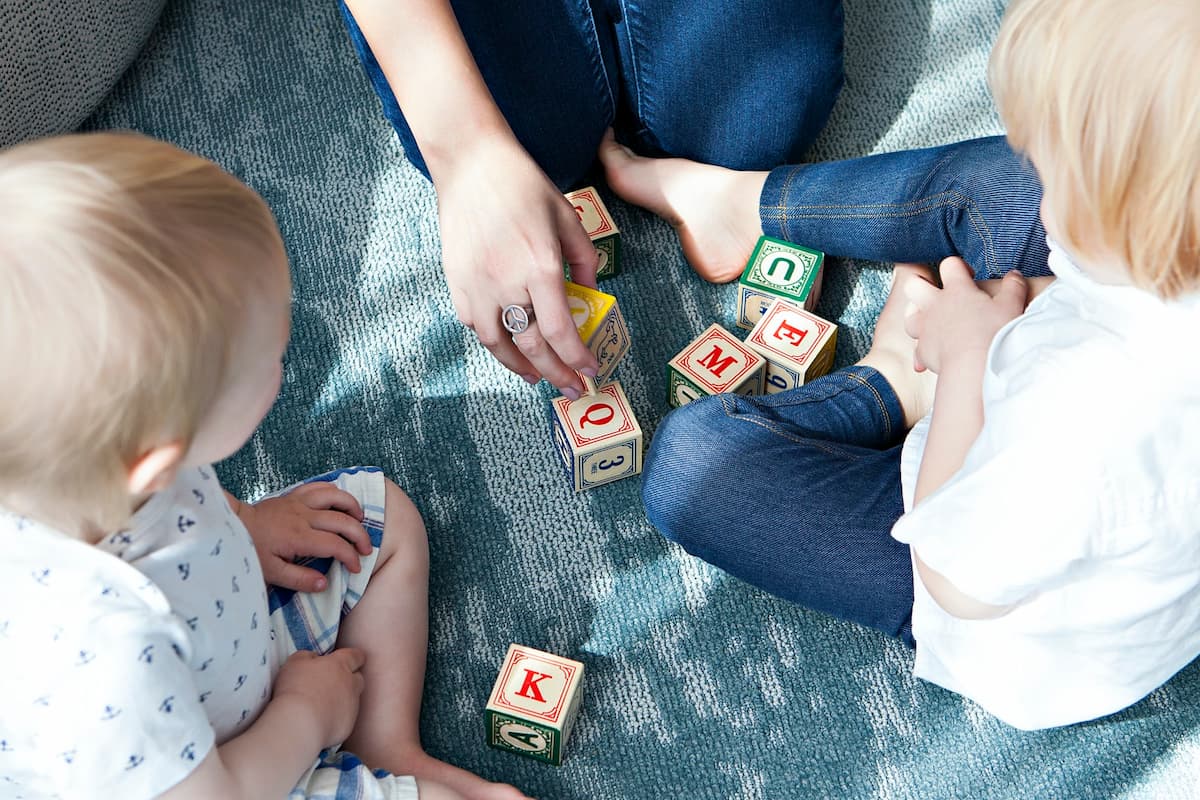ADDRESS TO THE NATIONAL PRESS CLUB
Some might be expecting that I have come here today to bag the Government’s proposed child care changes.
But that’s not what has brought me here.
And as much as I’d like to, I don’t have time today to go through Labor’s proud history of early education reform.
In fact, what has brought me here today is that I think it is overdue that we have a much different, bigger conversation away from party politics.
The Government has spent the last three years debating technicalities.
What we haven’t been discussing is the big picture. What we haven’t been discussing is how we best support Australian children’s development, Australian parents, or invest most successfully in our economic future.
Today I‘m here to argue that there are two stark facts we must accept.
The first is that we have an early childhood education and care system that is broken beyond immediate repair. In its current form, it is incapable of meeting the needs of Australian parents, our economy, government, the workforce that keeps it going, or most importantly, the children for whom it exists.
It is my view that there is a pressing need for us to discuss radical reform, a bold vision for the future and not just how we might tinker with the edges of the payment system.
The second fact I have come to outline today is that the evidence is now overwhelming that three year old children need access to preschool and it’s time the Government looked at the barriers to addressing this.
I’m conscious that it may sound rather extreme to essentially declare a whole sector in need of a re-do, so I might take a few moments to lay out the evidence on which I base this assertion.
Let’s first look at it from a public policy point of view.
Over the next four years, the Australian Government will spend $40 billion on early education and care.
$40 billion.
It’s more than we spend on government schools, subsidies for university places, or roads.
Despite this, there is a structural problem with the sector which means that Government cannot deliver on the main asks of them from parents when it comes to their child care needs – for access to quality early childhood services which are both affordable, and don’t require them to languish for years on waiting lists.
Government can’t deliver on affordability, as there is no mechanism to cap parents out of pocket costs.
And Government can’t deliver on accessibility, when there is no mechanism to make sure places are available in areas of undersupply –
And there is nothing in the Government’s proposed changes that will fundamentally alter these problems.
In our fee and subsidy system, the Government doesn’t actually have control over the levers that can deliver for children and parents.
That’s despite Government contributing about two thirds of the total cost.
Increasingly, decisions about early education services in Australia are being made in corporate interests – based on the highest price the market can bear – not community need.
Services are established where they are profitable – not necessarily where vulnerable children need access to quality early education, or where they will be most affordable and convenient for working parents on lower wages.
Child care providers make around $1 billion in profit annually – that’s around 10 per cent of government child care expenditure.
And centres in well-off areas are being bought and sold for millions of dollars.
They are discussed in the financial press as a property investment class alongside fast food and petrol stations.
“And there’s no doubt that childcare centres are viewed as a strong asset class – as strong as service stations or fast food outlets as far as investors are concerned.
“We’re getting a lot of interest from investors, not only regionally and nationally, but also from overseas.”
This sector is certainly working well for some – but I’d argue it is not achieving the public policy objectives of Government – who foots most of the bills and ultimately gets the blame for the market failure.
But Government is not at the top of the list when it comes to those suffering frustration as a result of the current system. That’s a mantle that is held by Australian parents.
In the current debate we are not hearing much about the needs or views of parents.
I want to tell you what I hear from parents when it comes to child care in Australia.
More than anything I hear the phrase: “It’s just too hard”.
I also hear, “Why can’t it be more like school?”, and how many can’t wait for their child to turn five – because all of a sudden, it then gets so much easier for them.
I hear how parents are frustrated by political debates which don’t seem to acknowledge their central and heartfelt view about the system – it’s broken and just not working for them.
It’s too complicated, too hard to navigate, too inconvenient, and too expensive.
And this is even after a lot of big improvements.
For instance, it’s hard to believe that before Labor changed the rules, parents had to wait until the end of the year to get a tax refund on child care expenses.
And to these parents I say today, we hear you.
The truth is there are also consequences for all taxpayers in this. In statistics, we see this clearly reflected in women’s workforce participation rates – which are lagging behind comparable countries like New Zealand, Canada and Sweden.
Last week, I spoke to a parent who put her name down at her local child care centre when she was 12 weeks pregnant with twins.
Her children are one year old now, and she is about to return to work.
After being on the waiting list for 18 months, there are no places at her local centre – or at any other local centres.
And it’s not as though she has a particularly difficult ask.
She’s looking for two days care a week, and is lucky enough to have an employer who is flexible with the days she works.
She told me that:
With the majority of women returning to work these days, our system needs to change to reflect that it isn’t a luxury to access quality child care, it’s a right.
She went on to ask the same question I have heard too many times to count:
Why is it so hard? Why can’t it be more like the school system?
Child care is not a reward for working – it’s a pre-requisite.
And when the child care system doesn’t work for parents, parents simply aren’t working.
Most importantly, the system isn’t delivering the best outcomes for Australian children – who you would think it goes without saying should be the central priority of our early childhood system.
The current debate has been about the Government’s proposed amendments – which they titled their “Jobs for Families” package. That title in itself is a pretty clear indication that children and their best interests and development are in no way central to these reform efforts.
Our children will be left to lag behind their peers in other countries unless we also move to a system that puts their developmental needs first.
There is no doubt that we have made some progress.
People have worked long and hard to move the sector from one viewed as a mass babysitting service to one which is focussed on quality, professionalism and early childhood development.
I know first-hand how some needed to be dragged kicking and screaming to the National Quality Framework.
But is that it? Is the substantial investment we make in early childhood services now doing everything possible to focus on children’s wellbeing and development? I don’t think so.
Let’s consider a few facts.
Children from more vulnerable or disadvantaged groups are underrepresented in our early learning system – despite clear and now long-standing evidence that they have the most to gain.
And, according to the Australian Early Development Census (AEDC), one in five children is classified as developmentally vulnerable when they reach school.
We focus a lot on PISA results when debating reforms to our schools, as we should – it is important to monitor where we stand in international comparisons.
But there is one factor that never gets attention in these debates – and that is: how far behind are Australian children before they start school?
In fact the number of children vulnerable on physical health and wellbeing, and social competence is increasing.
We are lucky in Australia to have precise information about where vulnerable children are, in the form of the AEDC.
We were the first country in the world to have this level of information about children’s early development. But seven years on, I strongly argue that it’s time we started using it effectively – to direct our investment in early education and take a needs-based and co-ordinated policy response to reach those children most at risk.
Children, each and every day are being let down by the fact that government isn’t using this information to support their welfare and development in the most practical way.
Crucially, our system isn’t working for the glue that holds everything together – the dedicated educators who do an incredibly important job.
It is well established that there is a crisis in our early childhood workforce with under valuing and low salaries leading to a mass exodus by educators.
The workforce is currently pursuing an equal pay case, and my side of politics have made clear that we think appropriate pay is both warranted and overdue.
It isn’t the only challenge that the workforce is facing though.
The Turnbull Government’s childcare changes have already cut all early education professional development programs. They are gone already, and there is no longer any workforce plan or strategy for this crucial sector.
This is the same government that repeatedly argues teachers are the most important factor in school education – yet doesn’t seem to have a concern in the world about who is entrusted with our youngest minds.
This needs to change.
And I know first-hand that parents are desperate to end the staff churn, so that they can leave their child in the mornings in the care of someone they know and trust, and not with a different person each week or month.
Given we know so clearly what is not working in our current system, and given the current changes put forward by the Government will not fundamentally change any of these facts.
We need to look at the bigger picture.
What would a 10-year long vision look like? And which bold ideas at least deserve, discussion, analysis and consideration?
It’s easy to dismiss big reform as too hard – or even impossible.
I myself have contemplated how hard it is to unscramble an egg, how complicated our system is with its mixed market, division of responsibility between state and federal Governments and differing character in different parts of the nation.
And I’m certainly not suggesting that an overhaul would be simple.
But Australia is not the first place to look at re-shaping its early education and care system.
In fact, among other OECD nations, we are one of the last.
Things are done very differently around the world.
In France, early education has been free and part of the school system for decades.
In Denmark, Norway and parts of Canada, there are caps on the out-of-pocket costs parents pay.
New Zealand provides 20 hours early education free – with heavy subsidies for an extra 10 hours for lower income working families.
In Germany, Finland and Sweden every child has a legal right to a place.
In the Netherlands, employers that don’t offer childcare have to pay a levy, and in Canada employers that do offer child care get a tax credit.
In the UK, children can access up to 30 hours free a week.
And I am proud that Labor has delivered big reforms in Australia too.
Universal Access preschool for four year olds, and the National Quality Framework are two particularly proud reforms of recent years.
Bold reform can be done – and I believe now that it must be done again.
If you were to design Australia’s system from scratch – you would not create what we have now.
There were many who were energised by the current Government’s announcement of a so called root and branch review of the entire early childhood system by the Productivity Commission – but in effect, narrow terms of reference meant that all it was capable of being was a look at how we might be able to continue doing the same thing a little bit simpler.
Rather than blindly continue investing in a fee and subsidy system, as the Government is proposing, we need to consider changes in the way government delivers early education.
But we need to start by first establishing the end goal. Surely we need to first agree on the long-term vision so we can ensure any steps we are taking are steps towards our destination.
I am happy to outline my long term vision for the early childhood sector in Australia.
It has at its centre children’s development, their best interests and most effective support during the critical first five years, when 90% of their brain development occurs.
It will be a system that is simple, affordable and effective for Australian parents to use. With a place down the road – like our school system.
The quality early learning delivered in it will have improved our school results and be regarded as a vital part of our social and economic infrastructure.
Social mobility will be improved.
Guaranteed places will see a significant increase in workforce participation.
It will be needs based – utilising the information we already have access to, to properly target additional programs to where they are needed.
Educators will be fairly paid, the profession will be valued and turnover will be low.
We will see early childhood education as just as crucial to the future as our schools.
Now I need to be clear.
I am not proposing we overturn our current system today, tomorrow or next year.
But we do need to have a serious look at options for reform and debate options of improved service delivery – to get us towards our vision.
To do this will ultimately require detailed modelling, and research – to back in a long term plan.
There are many possible models we could adopt and today I argue now is the time for their consideration.
I don’t welcome the fact that the current Government have been talking about making childcare changes for three years and we are yet to have a parliamentary debate.
I certainly don’t welcome the fact that they have now delayed implementation of any changes, so even if and when they eventually pass the Parliament they will not come into effect until mid-2018.
But I do think the void they have created gives us an opportunity. We have the time and space to properly examine other future possibilities.
For example, we could consider what it would look like if government directly purchased places.
Government could see how many places are required and in what area and tender for delivery.
Done correctly, this should put downward pressure on costs, by introducing competitive tendering for service delivery, and could cap the out of pocket costs of parents.
It would incentivise new places being created where required.
Government could focus more holistically on child development needs by making sure services were matched to the local community – and use information like the AEDC to target programs for vulnerable and disadvantaged children.
Ultimately we would work toward ensuring children could get a guaranteed place in a local centre – like school.
Imagine how much easier it would be for parents to get back into the workforce and increase their hours if they knew they could get a local place, and that the price was capped and affordable.
And of course that is just one model.
Similar countries, with a mix of different providers – like New Zealand, the United Kingdom and Ireland – operate schemes with set payment rates to providers.
Significant work would be needed to make this work in an Australian context, but this could operate in a similar way to the Medical Benefits Schedule – government provides funding, but in return, out of pocket costs are limited.
We believe it is time we lifted our eyes, broadened the debate and examined wider options. And that is exactly what we intend to do.
Labor can’t sit by while the Government fails to do its job planning for Australia’s future.
We took to the election a process for establishing long-term reform.
So today, I can announce we will undertake a national consultation with parents, with child development experts, with academics, educators and providers on what our early education system should look like in the future – on detailed options for serious reform and on modelling.
The Government may be busy with inward-looking, administrative negotiations behind closed doors with vested interests, but we will be out in the community holding consultations directly with Australian parents – in every state and territory – to show that we hear them when they tell us it is just too hard.
And hear how they think the sector could be re-shaped to make their lives easier.
This will follow on from the work Jenny Macklin has done in setting Labor’s Growing Together social policy framework.
When it comes to this sector, tinkering is not the solution. It is past the time to play it safe.
Bill Shorten has shown that under him, Labor is up for bold policy debates – he showed that with negative gearing, with school funding and with superannuation reform.
Today we commit to a proper, broad, thorough investigation of the options for serious reform. To the policy work required to ensure that we can set Australians and Australia up for the future.
But I can also say today that there is also one part of the system where I think the answer is blindingly clear – and that’s the need to examine the barriers to three year old preschool.
Labor’s policy of universal access to preschool for four year olds is now reaching maturity – and it’s a success.
We now see over 95 per cent of children attending preschool in the year before school.
85 per cent are enrolled for at least 15 hours a week – up from just 23 per cent before Labor introduced these reforms in 2009.
An Australian study published this year shows that universal access to preschool really does make a difference – and attendance reduces vulnerability across the socio-economic gradient.
A separate study by the University of Melbourne shows that Australian children that attended preschool did better in Year Three NAPLAN tests.
Internationally, PISA results show that 15 year olds that attended preschool were on average a year ahead of those that did not.
To get the most out of our preschool investment, the evidence is now clear – we need to start earlier.
This age is a crucially important point in brain development – it’s when different channels of development are all active and receptive.
And it’s the most effective and efficient time to invest in children and improve outcomes.
As Nobel Prize winning economist James Heckmann says –
“Like it or not, the most important mental and behavioural patterns, once established, are difficult to change once children enter school.”
UK Government analysis shows two years of preschool greatly improves school readiness, compared to attendance for one year.
Children who access two years of high quality preschool are eight months ahead when they start school – compared to a child that has stayed at home.
And they are three months ahead of a child who accessed quality preschool for one year.
For vulnerable children, one year’s preschool often just isn’t enough to catch up.
Australia is increasingly looking backward and isolated on this question.
Across the ditch, New Zealand introduced three year old preschool in 2007.
There is a Europe-wide standard that 90 per cent of children between three years old and school age should be in early education.
Almost all of Western Europe has established a legal entitlement to early education or preschool, and in Eastern Europe, attendance is often compulsory.
Ireland introduced universal access for four year olds about the same time as Australia – and this year they are extending it to all three year olds.
In 2004 the Labour Government in the UK introduced 15 hours preschool for all three year olds.
And the benefits have been so clear that the Conservative Government recently extended access to the most disadvantaged 40 per cent of two year olds.
Countries in our region that are doing well on school education indexes in our region – like Shanghai, Hong Kong, and Korea are preparing for universal preschool for three year olds.
And the Chinese national Government is working towards universal access for three year olds by 2020.
It’s about play-based learning, and an evidence-based early education framework to support that.
It’s not at all impossible.
Seven years ago we did it for four years olds – of course it can be done again for three year olds.
That’s why Labor took to the election a commitment to review the barriers and capacity constraints that would need to be overcome to see universal preschool for three year olds become a reality.
Today I call upon the Government to follow the evidence and outline their next steps towards three year old preschool now.
Early childhood services are not babysitting.
They are an essential part of our education system.
And if we want the next generation to be productive, skilled and successful – we need to start viewing early education alongside, school, TAFE and university.
They are an essential part of our economic infrastructure.
And if we want to boost our human capital and reap the long-term benefits of a more educated workforce, and the short term benefits of greater participation, we must get early education right.
And they are an essential part of our child welfare system.
Because the research shows there is no better time to invest in improving peoples life chances.
They are also the most important lever that the federal government has to get children’s early development right.
And they should be valued and prioritised as such.
What we can’t do is try and retro-fit an existing system established decades ago, and for a very different purpose, to achieve these goals.
We have taken that approach as far as it can go.
We need a custom-made and cohesive early childhood sector.
One that will effectively give Australian children the best start.
And one that will better leverage Australia’s $40 billion investment.
It’s an awful lot of work, but it’s worthy of the effort.
Just as Labor has always led reform in early childhood – it’s Labor that will do it again.
And today we are saying that the work starts now.




